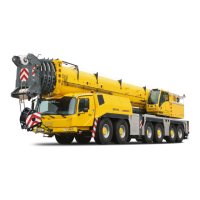HYDRAULIC SYSTEM CD3340B/YB4411
4-4
Published 04/07/2015 Control # 569-00
3. Make a visual inspection. Look for a restriction in the
linkages, low level of hydraulic oil, bent tubes, collapsed
or ballooned hoses, leakage around the hydraulic
components, etc.
Second, make an analysis of symptoms. The function of
each component in the system must be known before a
correct analysis can be made.
Remember:
1. If a problem is common to all circuits, the component
which is causing the problem must also be common to
all circuits. Examples are: the engine, pump, hydraulic
tank and filters.
2. If the problem is common to only two or three circuits,
the component which is causing the problem must be
common to those two or three circuits. Examples are:
pump section, relief valve, hydraulic swivel, etc.
3. If a problem is in only one circuit, then the component
which is causing the problem must be in that circuit.
Examples are: valve section, cylinder, motor.
Again, use the schematic. Find which components are in the
circuit or circuits. What component can cause the problem
with these symptoms? Make a list of the possible causes.
Start at the source of the flow in that circuit. If the problem is
in all circuits, start at the pump. Know the direction of oil flow
through each circuit.
Use the flowmeter and pressure gauge to check your
diagnosis of the problem. Start at the source of the flow and
check each component in sequence until the exact location
of the problem is found.
If the problem is two or three circuits, check each circuit
separately. After a circuit is checked, use caps or plugs to
remove that circuit from the system. Continue to next circuit
down the line until the problem is found.
NOTE: Do not remove the main relief valve from the circuit.
The relief valve must be kept in the circuit to inhibit
damage to the pump and other components.
Reference Only
